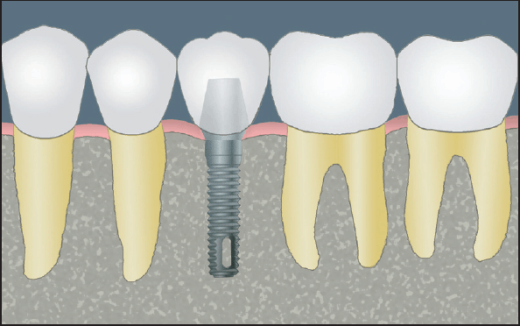
Dental implants provide a long-lasting solution for missing teeth by enhancing oral health, restoring full mouth function, and improving speech and comfort. They also offer a more secure and natural alternative to removable dentures. This dental implant guide will help you understand the implant treatment steps so you can feel at ease and prepared for the process, from the initial consultation to the final placement of your new replacement tooth.
The Purpose of Dental Implants
Dental implants can replace a single tooth or multiple teeth with an artificial root and crown, restoring your smile and allowing you to enjoy your favorite foods.
An implant consists of a small titanium post placed in the jawbone to serve as the replacement tooth root. A crown is attached to the implant and is the visible part of the artificial tooth, custom-made to match the shape, size, and color of the surrounding teeth.
"Dental implants function just like natural teeth," says Dr. Chad Dammling, Oral and Maxillofacial Surgeon at Carolinas Center for Oral & Facial Surgery. "They help preserve bone density, prevent resorption, prevent shifting of surrounding teeth, and provide a reliable, long-term solution for a confident, healthy smile."
Dental Implant Treatment Process
Step 1 - Consultation & Treatment Planning
During your dental implant consultation with your oral surgeon, a series of images, scans, and impressions will be taken to guide your treatment planning. Together with your surgeon, you will determine the tooth replacement options that fit your needs and goals. A digital model will be created to guide the placement and position of your dental implant.
Step 2 - Implant Placement
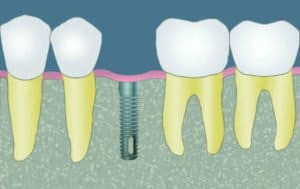
For the surgical placement of your titanium implant, your oral surgeon will typically use local anesthesia to numb the gum tissue. In some cases, sedation options such as IV or general anesthesia may be available. A small incision is made in the gums, and a hole is drilled into the jawbone. Your oral surgeon will then place the implant into the bone with an implant guide and close the incision with small stitches.
"Placing a dental implant is a precise procedure that requires careful planning," says Dr. Dammling. "The implant placement is planned off your three-dimensional x-ray and guided securely into the bone, creating a strong foundation for the final restoration."
An implant can be placed wherever adequate bone structure is present. If necessary, a bone graft will be performed first.
Step 3 - Osseointegration & Healing
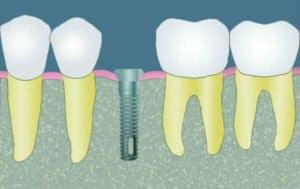
Following the implant placement, a healing period of 3-4 months is required for the implant to fuse to the bone, a process called osseointegration. Osseointegration ensures the implant becomes as stable as a natural tooth root, providing a solid base for the artificial tooth crown. During this process, a small metal healing cap will be attached to the top of the implant and protrude slightly above the gum line. If the implant is in an aesthetically visible area, your oral surgeon may place a temporary crown or removable restoration in this area to ensure a natural look while the implant heals.
Step 4 - Abutment Placement
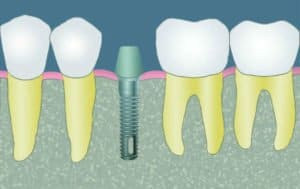
Once the bone and post have fused together, the abutment is attached to connect the implant with the crown.
Step 5 - Crown Placement
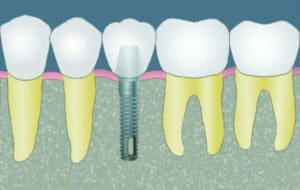
The final phase of the restoration process is to affix your prosthetic tooth crown to the abutment and dental implant. Your prosthodontist or dentist will create the custom-fit crown in the ideal size, shape, and color to fit properly with your adjacent teeth. They will then position, place, and adjust the crown to reveal a healthy, beautiful, and functional smile.
Bone Grafting
Bone grafting is the process of rebuilding bone to successfully support a dental implant.
An implant can be placed wherever there is adequate bone structure, but if there isn’t enough jawbone density to securely hold a dental implant, a bone graft may be required beforehand.
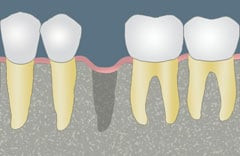
A bone graft uses granulated material in a specific area of the body to promote new bone growth. The grafting material may be sourced from your own bone, or a synthetic material may be used.
"At Carolinas Center for Oral & Facial Surgery, we use advanced bone grafting techniques to rebuild jawbone and create a strong foundation for dental implants," says Dr. Dammling. "For many patients, this is a crucial first step toward a healthy, lasting smile."
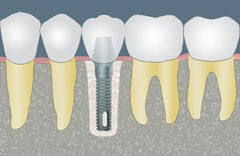
If the bone surrounding the site of your missing tooth is not healthy or sufficient, the graft will build up a bone ridge where the implant is to be placed.
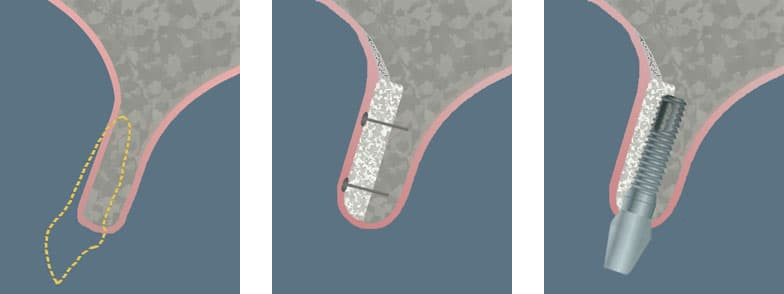
A bone graft may be necessary before implant surgery for several reasons. Gum disease or trauma can weaken and damage bone. It is also possible that you naturally lack bone in a specific area. When a tooth is extracted or missing, bone in that area may also shrink.
When you have a tooth extracted and plan to have an implant replace it, the surgeon may be able to determine if you have inadequate bone density at the time of your extraction. The procedure of placing bone graft material into the empty tooth socket immediately following a tooth extraction is called site preservation. It prevents the jawbone from shrinking and preserves the site for future dental implants or other restorative treatments.
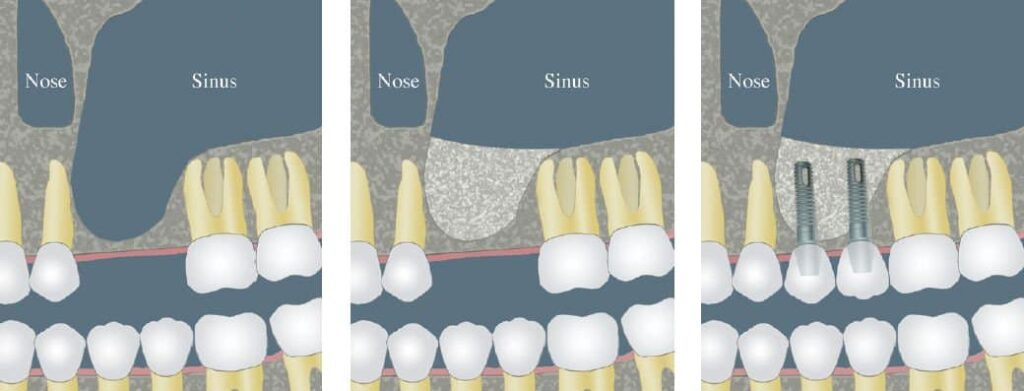
When teeth are lost in the upper jaw, the bone often shrinks rapidly, causing the sinus cavity to enlarge and encroach on the tooth-bearing area. This may result in the need for a sinus graft. By grafting bone under the lining of the sinus, the height of your upper jaw is increased. This graft creates an adequate foundation for the implant.
We Are Here to Help
Our team prioritizes patient education, and we always want you to feel fully informed and comfortable about your treatment plans. Contact us if you have questions or to schedule a consultation for dental implants with our experienced specialists at any of our locations in North Carolina or South Carolina.
Back




